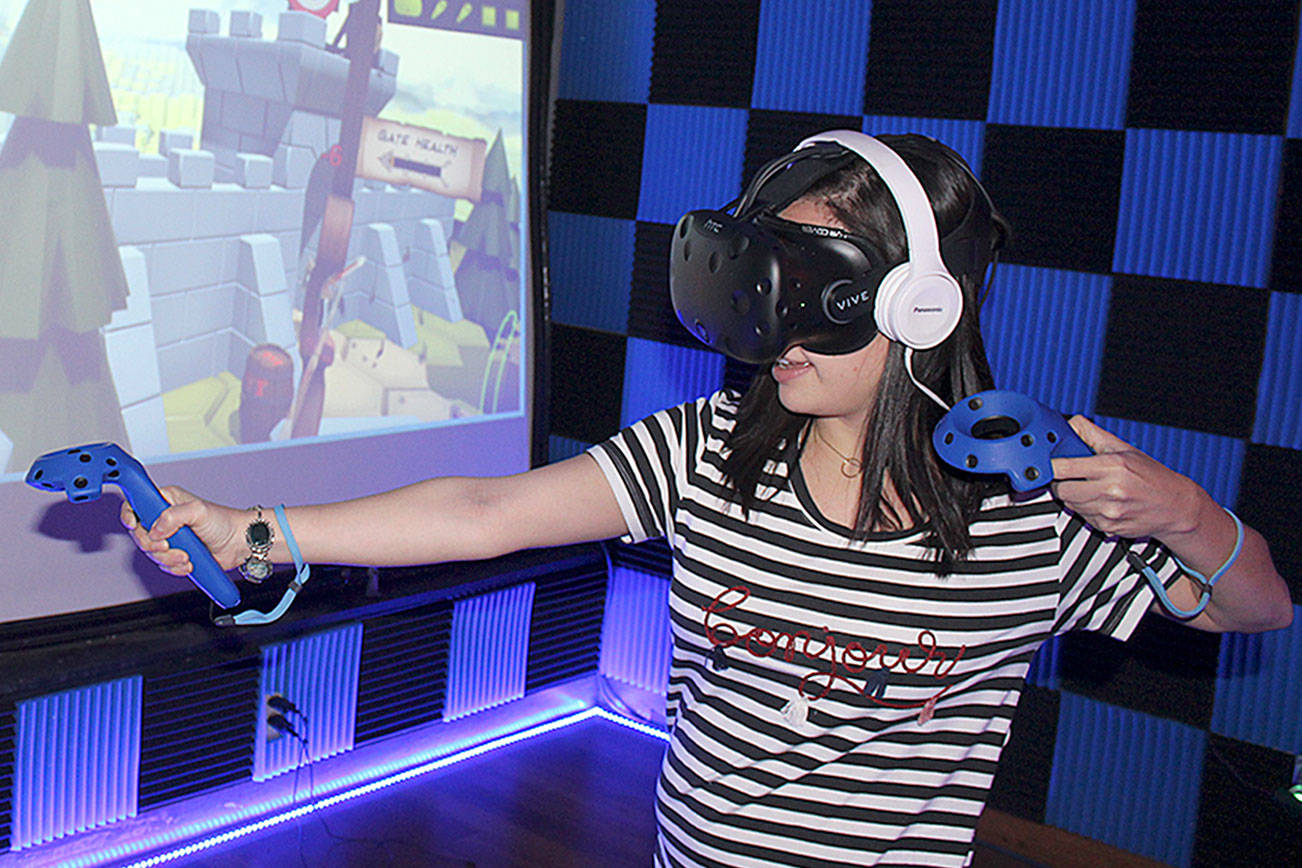The best way to describe virtual reality is not to.
Just step in front of the screen, don the weird gear and go.
Is that a blue whale swimming by?
Why is the solar system floating by my ear?
Didn’t I just flatten that zombie?
These and other unworldly questions are sure to arise while being transported from the holodeck inside Langley’s Machine Shop.
Holodeck?
More precisely Holodeck Virtual Reality, the dream business destiny of Ethan Worthington.
“I love Star Trek,” said the 31-year-old Langley resident. “Of course I named it that. I am transporting people to another dimension.”
And there’s no copyright on the term holodeck where the Starship Enterprise crew vacations and plays out storylines via hologram images.
Virtual reality, or VR, is computer-generated simulation that uses 3D images to create life-like images. It puts viewers in a bubble of make believe.
While it comes across as technology best suited for gamers, kids and sci-fi geeks, the potential of virtual reality is being discovered in medicine, education, criminal investigations, architecture, mental health therapy and manufacturing.
University of Washington researchers developed breakthrough virtual reality therapy called SnowWorld where users throw snowballs at penguins while listening to Paul Simon. It’s been proven to be more effective than morphine in pain management for burn victims.
Like computers, virtual reality technology has gone from car-size equipment to compact, which is why it’s popping up as a small business entertainment enterprise.
In four spaces measuring 15 feet by 15 feet, Worthington padded a few walls with colorful foam squares and added lines of tiny lights on the floor to define spaces. Each booth has a large screen where a fraction of the virtual reality program appears. This helps Worthington know what his customers are seeing.
Or why they are laughing, acting scared or getting emotional.
One regular customer of Worthington’s is an older woman who suffers severe vertigo and can no longer travel.
“Using Google Earth, I can put her anywhere, any city, any country and she gets to experience the world again,” he said. “Half the time she comes out in tears.”
Another regular is a grandmother who brings in her grandson every week and buys him an hour’s worth of virtual programs that require lots of interaction, such as boxing, battling monsters, taking down gladiators.
“She told me he just spends all his time at the computer and won’t do anything physical,” Worthington said. “Here, he gets a really good workout, comes out sweating and thinks his grandmother is great for buying him virtual reality time.”
As Worthington adjusts the wrap-a-round goggles and headphones on a new customer, he explains one of the most important rules of virtual reality.
“No running. I’ve seen grown men fleeing zombies, running smack into the wall.”
Silvana Iosve, visiting from Venezuela, chooses a program that involves archery. Holding blue control devices that interact with the virtual imagery, she pulls her elbow back, lines up an arrow and releases.
Her friend, Frank Coccia, watching from nearby, only sees Iosve mimicking shooting a phantom arrow. When he puts on the VR goggles, she laughs as he lunges at zombies with a “sword.” Worthington then shows an educational program called Blu that plants Coccia underwater with manta rays, a coral reef, jellyfish and the world’s largest mammal, a blue whale, cruising by.
“We just were at the whale center so this is cool,” said Coccia, who lives in Seattle. “That was a lot of fun.”
People can also create virtual art, play games with friends using avatars and tour the solar system.
Worthington’s business is the latest entertainment activity to join the Machine Shop, a sprawling former fitness and dance venue turned arcade. It’s filled with more than 60 pinball machines, the collection of shop owner, Tim Leonard.
Leonard said he knew nothing about virtual reality when Worthington approached him about renting space.
“So I tried it and I said what most people say, “Oh, my God, this is so amazing.
“It’s a perfect fit because it’s bringing the newest technology in, and I have some of the oldest — pinball machines from 1964.”


